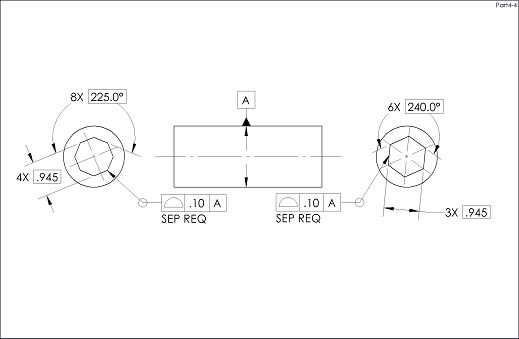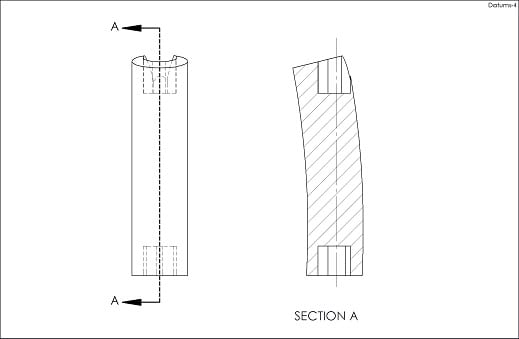One end of a part is hexagonal—left end: called datum feature A, dimensioned with basic angle, basic size across the flats, basic size across opposite corners and an all-around datumless profile.
The opposite end: right end: profile all around to A primary. (same as the left end: everything else is shown basic).
Questions:
How to relax the clocking between the hexagonal side of the part and octagonal one?
We have some arguments that SIM REQT added under the octagonal all-around profile will only brake the mutual relationship between the eight sides of the octagon, but won’t accomplish anything about relative rotation between hex and octagonal shape.
How to make the octogonal shape to freely rotate about its centroid?
The opposite end: right end: profile all around to A primary. (same as the left end: everything else is shown basic).
Questions:
How to relax the clocking between the hexagonal side of the part and octagonal one?
We have some arguments that SIM REQT added under the octagonal all-around profile will only brake the mutual relationship between the eight sides of the octagon, but won’t accomplish anything about relative rotation between hex and octagonal shape.
How to make the octogonal shape to freely rotate about its centroid?


![[bigsmile] [bigsmile] [bigsmile]](/data/assets/smilies/bigsmile.gif)
